Category: Thermoplastic Powder Paint
Thermoplastic powder paint is a type of coating process that involves applying a dry powder paints of thermoplastic material onto a substrate, usually a metal surface. The powder is heated until it melts and forms a continuous, protective coating. This coating process can be done using several techniques, including electrostatic spraying and fluidized bed dipping.
Thermoplastic powder paints offers several advantages over traditional liquid coatings, including:
- Durability: Thermoplastic paints are highly durable and resistant to impact, abrasion, and chemicals, making them ideal for use in harsh environments.
- Ease of application: Thermoplastic powder paints can be applied more easily and uniformly than liquid coatings, which can help to reduce material waste and improve efficiency.
- Cost-effectiveness: Because thermoplastic paints can be applied more efficiently, they can often be less expensive than liquid coatings in the long run.
- Environmental friendliness: Thermoplastic paints are free of volatile organic compounds (VOCs), which can make them a more environmentally friendly alternative to liquid coatings.
Common types of thermoplastic powder paint used for coating include polyethylene, polypropylene, nylon, and PVC. Each type of powder has its unique properties and is suitable for different applications, depending on the specific requirements of the substrate being coated.
Buy PECOAT® PE Thermoplastic Polyethylene Powder Paint
Fluidized Bed Dipping Process

Physical Modification of Polypropylene

Adding organic or inorganic additives to the PP (polypropylene) matrix during the mixing and compounding process to obtain high-performance PP composite materials. The main methods include filling modification and blending modification. Filling modification In the PP molding process, fillers such as silicates, calcium carbonate, silica, cellulose, and glass fibers are added to the polymer to improve heat resistance, reduce costs, increase rigidity, and reduce molding shrinkage of PP. However, the impact strength and elongation of PP will decrease. Glass fiber,Read More …
Nylon 11 Powder Coating
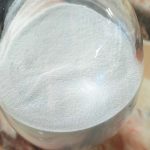
Introduction Nylon 11 powder coating has excellent wear resistance, seawater corrosion resistance, and noise reduction advantages. Polyamide resin is generally called nylon, which is a white or slightly yellow powder. It is a widely used thermoplastic powder coating. Common varieties include nylon 1010, nylon 6, nylon 66, nylon 11, nylon 12, copolymer nylon, terpolymer nylon, and low melting point nylon. They can be used alone or mixed with fillers, lubricants, and other additives. Nylon 11 is a resin produced byRead More …
Plastic Powder Coatings

What is plastic powder coatings? Plastic powder coatings is a type of thermoplastic coating that involves applying a dry plastic powder to a substrate, which is then cured under heat to form a hard, durable, and attractive finish. This process is commonly used to coat metal surfaces to provide protection against corrosion, abrasion, and weathering, as well as to enhance their aesthetic appearance. The powder coating process involves several steps, starting with the preparation of the substrate. This involves cleaning andRead More …
LDPE Powder Coating Thermoplastic Powder
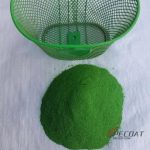
Introduction of LDPE powder coating LDPE powder coating is a type of coating that is made from low density polyethylene (LDPE) resin. This type of coating is commonly used in a variety of industries, including appliance, automotive, aerospace, and construction. Powder coating is a process in which a dry powder is applied to a surface using an electrostatic charge or fluidized bed. The powder is then heated to a high temperature, causing it to melt and form a smooth, evenRead More …
Is PVC Thermoplastic?
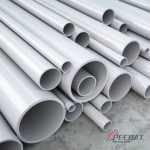
PVC (polyvinyl chloride) is a thermoplastic material. Thermoplastics are a type of polymer that can be melted and re-molded multiple times without undergoing any significant chemical change. PVC is a thermoplastic polymer that is widely used in various applications due to its unique properties such as durability, flexibility, and resistance to chemicals and weathering. PVC is produced by polymerizing vinyl chloride monomer (VCM) through a process called suspension polymerization. The resulting polymer is a white powder that can be processedRead More …
Thermoplastic Materials In Different Types
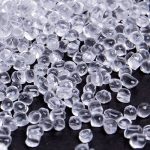
Introduction Thermoplastic materials are a type of polymer that can be melted and re-molded multiple times without undergoing any significant chemical change. They are widely used in various industries due to their unique properties and versatility. One of the most significant advantages of thermoplastic materials is their ability to be molded into complex shapes with ease. This makes them ideal for use in manufacturing processes where intricate designs are required. Additionally, thermoplastics are lightweight and have excellent resistance to impact, makingRead More …
How to Hang Workpiece Properly in Thermoplastic Coating Dip Process?
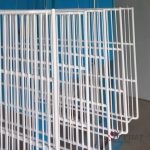
Some of the suggestions below may not be the best, but you can try using them. If you have a better method, feel free to share it with us. When there are no hang holes or any place on the surface to hang the workpiece, how can we hang it better? Method 1: Use a very thin wire to bind the workpiece. After the dip coating process is completed and the coating is cooled, simply pull out or cut off the wire. Method 2:Read More …
Polyethylene Resin – Material Encyclopedia
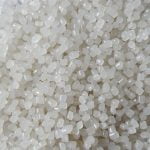
What is polyethylene resin Polyethylene resin is a high polymer compound formed by the polymerization of ethylene molecules. It is also one of the most widely used plastics in the world. It has the characteristics of low density, high strength, corrosion resistance, high temperature resistance, not easy to aging, easy processing, etc. It is widely used in packaging, construction, home, medical, electronics and other fields. The price of polyethylene resin According to the monitoring data of the industrial product market,Read More …
Thermoplastic Powder Paint – Supplier,Develope,Pros and Cons
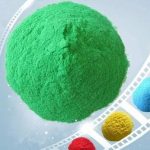
Supplier China PECOAT® specialized in production and export of thermoplastic powder paint, the product has polyethylene powder paint, pvc powder paint, nylon powder paint, and fluidized bed dipping equipment. Development History of Thermoplastic Powder Paint Since the oil crisis in the 1970s, powder coatings have rapidly developed due to their resource conservation, environmental friendliness, and suitability for automated production. Thermoplastic powder paint ( also called thermoplastic powder coating), one of the two main types of powder paint, started to emerge in theRead More …
What Is Thermoplastic Powder Coating Process
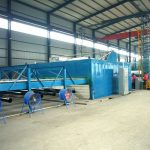
Thermoplastic powder coating is a process that involves the application of a thermoplastic polymer in a powder form onto a substrate. The powder is heated until it melts and flows onto the substrate, forming a continuous coating. This process is commonly used for coating metal surfaces, and offers advantages such as high durability, chemical resistance, and ease of application. The thermoplastic powder coating process begins with the preparation of the substrate. The substrate is cleaned and pre-treated to ensure thatRead More …
